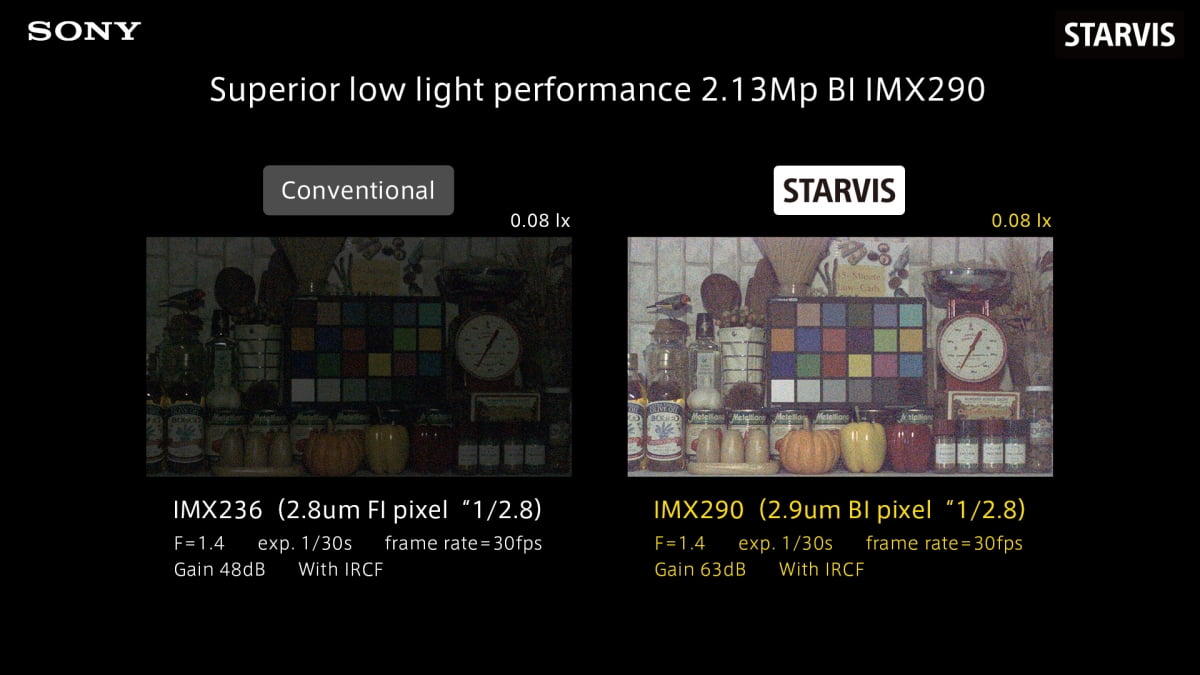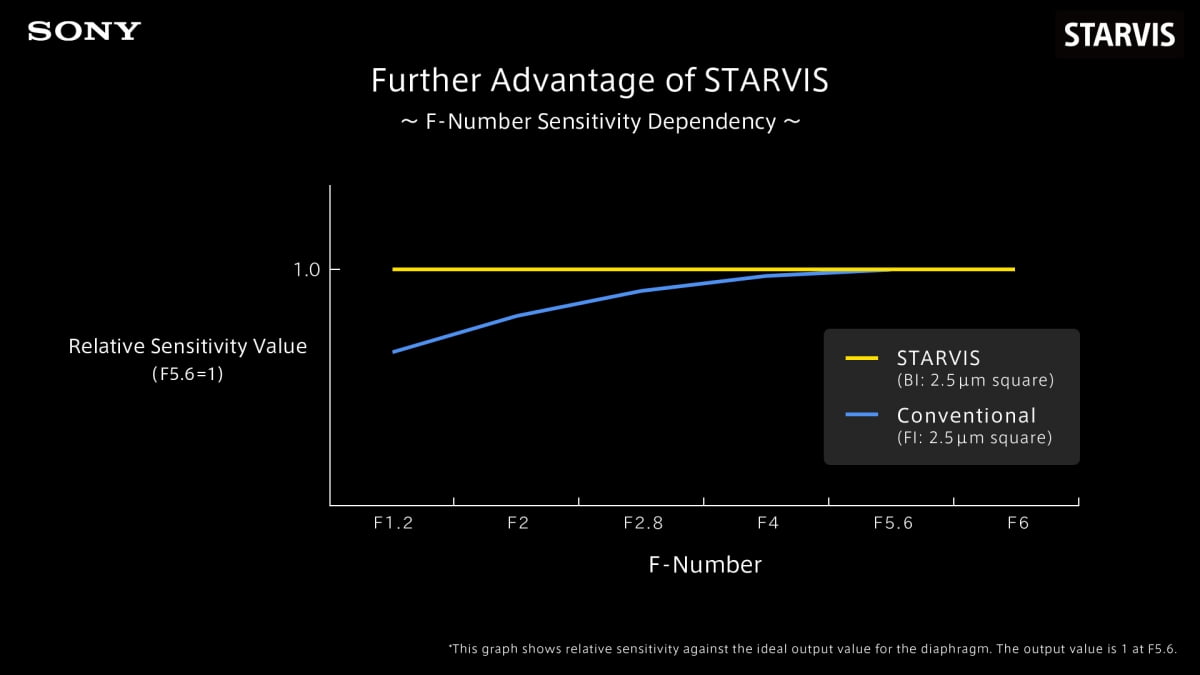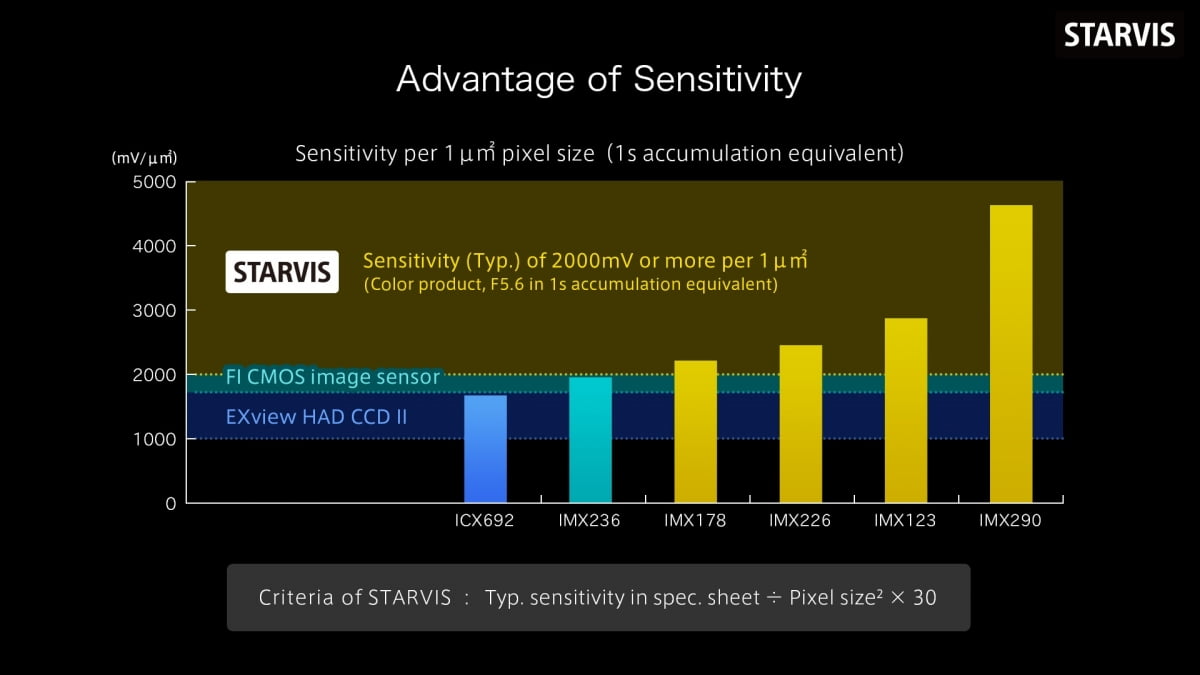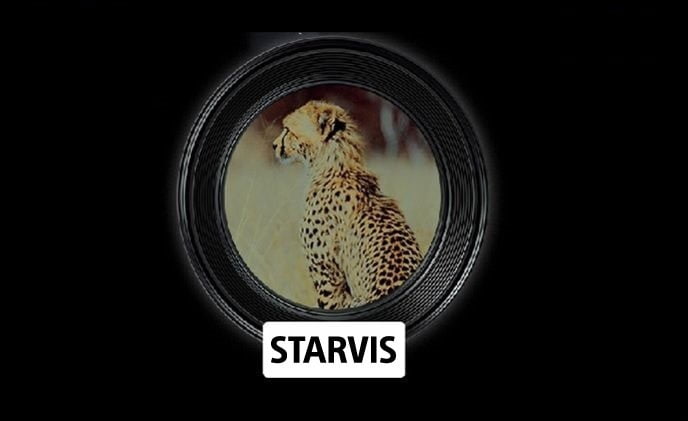Sony’s STARVIS sensor technology increases the sensitivity of back-illuminated CMOS image sensors for security cameras.
STARVIS increases the light utilization efficiency over a wide range of wavelengths, enhancing sensitivity not only in the visible light region but also the near infrared light region that is often used by security cameras. As a result, STARVIS achieves a sensitivity of 2,000 mV or more per 1μ㎡ pixel size, and realizes 2 or more times the sensitivity of the existing CCD image sensor (EXview HAD CCD II).

(Fig. 1) Color product, when imaging with a 706 cd/㎡ light source, F5.6 in 1 s accumulation equivalent.
Higher Sensitivity to Near Infrared Light
Security cameras require good visibility under low-visible-light illumination, and also sensitivity to near infrared light, which is considered important for completely dark conditions and the day/night function. STARVIS enhances visibility by using a back-illuminated structure that increases sensitivity to visible light, and also by applying technology that increases sensitivity to near infrared light.

The IMX290LQR, which commenced mass production from June 2015, realizes 2 or more times the sensitivity in the visible light region and three or more times the sensitivity in the near infrared light region (850 nm) compared to the existing same-pixel-size product with enhanced near infrared light sensitivity that uses a front-illuminated structure. The overall result is superior visibility. (See Fig. 2)
Outstanding Sensitivity Characteristics at Low Illumination
Security cameras are often used to image dark scenes, so they are used with the lens aperture fully open in many cases. When the lens aperture is fully open, the angle of incident light increases. Therefore, when using a front-illuminated structure, the wiring layer between the on-chip lens on the front surface of the CMOS image sensor and the photodiode that performs photoelectric conversion blocks part of the incident light, which was a factor lowering the sensitivity. In contrast, the back-illuminated structure adopted by STARVIS does not have a wiring layer that blocks incident light above the photodiode, dramatically increasing the light utilization efficiency.

In Fig. 3, the sensitivity relative to the theoretical value at each F-number (actual sensitivity/theoretical value) is normalized so that the relative sensitivity is 1 at F5.6. Values closer to 1 indicate better light utilization efficiency.
Fig. 3 shows an example of the relationship between the lens aperture value (F-number) and the relative sensitivity for back-illuminated and front-illuminated structures. Generally speaking, it is known that the incident light quantity doubles each time the F-number is reduced by one step and the lens aperture is widened.
When using a front-illuminated structure, the effect of the abovementioned wiring layer means that a sufficient increase in sensitivity cannot be obtained even by reducing the F-number. Fig. 3, however, shows that the back-illuminated structure used by STARVIS increases the sensitivity to near the theoretical value, even at low F-numbers.♦











